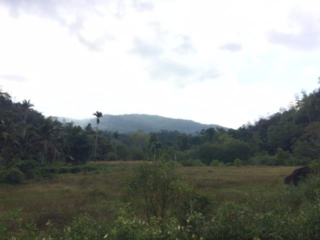Sinharaja Forest Reserve, Sri Lanka
Sinharaja Forest Reserve, Sri Lanka

The Sinharaja Forest Reserve is a Man and the Biosphere reserve in southwest Sri Lanka that contains the last primary wet evergreen mixed-dipterocarp rain forest that has not been logged. Only 10% of this kind of forest type remains on the island but it is represented by much larger forest areas elsewhere in south and southeast Asia. The total conservation area of the Sinharaja now stands at 89 square kilometers.
The first studies by Profs. Nimal and Savitri Gunatilleke of the University of Peradeniya, Sri Lanka, examined the floristics of the forest. The plots for these investigations were set up from 1978 to 1980. In 1980, students from the University of Peradeniya started to work on the soils, mycorrihizae and forest regeneration of the reserve. In 1985, Mark Ashton started working at Sinharaja on the regeneration ecology and silviculture of the forest with the Gunatillekes, and with B.M.P. Singhakumara of the University of Sri Jayawardenapura. Since then, other studies have been started on the reproductive biology and genetics of important commercial trees and non-timber forest plants. The Center for Tropical Forest Science, in collaboration with the Gunatillekes and Peter S. Ashton of Harvard University, established a 20 ha plot in primary rain forest in 1994. Also, since 1994 economists (Herat Gunatilleke, University of Peradeniya; Piya Abeygunawardena, Asia Development Bank) and rural sociologists (Karyiawasam Dayananda, Forest Department; W. Jayatlleke, University of Peradeniya) have been conducting research on the people of the Sinharaja forest.
The focus of our research on silviculture has been on the regeneration ecology of mixed-dipterocarp forests. Fundamental studies are investigating the physiological and anatomical adaptations regeneration can have. Different species are being compared in relation to interacting factors of light, soil moisture and nutrient status. These studies are being conducted in controlled shelters or shade houses. Results from this work has been used to evaluate field performance of regeneration beneath the forest canopy and across canopy openings created from tree falls. Natural regeneration and seedling plantings are being evaluated over the long-term within different disturbance environments and across different parts of the forest topography.
These studies are providing the baseline ecological information for the development of natural regeneration methods for this forest type. Currently we have been testing different kinds of regeneration treatments that would be defined silviculturally as irregular shelterwoods. We are monitoring the establishment and growth of advance regeneration and of enrichment planting treatments of various non-timber species (rattan, sugar palm, cardamon). We also have been using the baseline seedling studies to develop techniques for the restoration of rain forest on degraded lands. Based on the seedling studies we are evaluating natural regeneration methods.